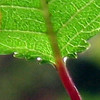Curcuma planta usada como corante com potente efeito
medicinal.
Curcuma longa L. é uma planta herbácea perene pertencente a família
Zingiberaceae. A planta cresce a uma altura de três a cinco metros, e é
amplamente cultivada na Ásia, Índia, China e outros países com clima tropical. O
rizoma é a parte da planta utilizada medicinalmente; é geralmente cozido e seco,
produzindo um pó amarelo. O pó do açafrão é usado em alimentos como flavorizante
e corante. Existe uma outra planta com o mesmo nome açafrão, que é o verdadeiro
é o Crocus sativus e a parte utilizada são os estigmas das flores.
O principal componente ativo do açafrão é o flavonóide curcumina e óleos
voláteis, incluindo a tumerona, atlantona, e zingiberona. Outros componentes
também presentes são açúcares, proteínas e resinas. O composto mais estudado é a
curcumina, que compreende 0,3 a 5,4 por cento da matéria seca.
Devido às suas atividades biológicas, um grande número de estudos tem sido
apresentados. A curcumina possui propriedades antioxidante (Cohly et al., 1998;
Mortellini et al., 2000), hepatoprotetora (Deshpande et al., 1998; Park et al.,
2000), anti-plaquetária (Tortosa et al., 1999; Srivastava et al., 1986), redutor
de colesterol, antibacteriana e anti-fúngica, antiinflamatória (Chainani-Wu,
2003), anticarcinogenica (Frank et al., 2003), antivírica (Suai et al., 1993),
atividade antimicrobiana (Rasmussen et al., 2000; Han e Yang, 2005),
gastrointestinal (Ammon e Wahl 1991; Rafatullah et al., 1990). Além destes, a
curcumina possui propriedades tais como antineoplásica, citotóxica,
imunomoduladora (Strimpakos e Sharma, 2008) e antitrombótica, cicatrizante,
antidiabetica e anti-estresse (Chainani-Wu, 2003). Possui ação contra a doença
de Alzheimer (Yang et al., 2004), contra artrite (Molnar e Garai, 2005) e
anti-câncer (Duvoix et al., 2005).
Referências
Ammon, H. P. T.; Wahl, M. A. 1991. Pharmacology of Cucuma longa. Planta
Medica. 57:1-7.
Chainani-Wu, N. 2003. Safety and anti-inflammatory activity of curcumin: a
component of turmeric (Curcuma longa). J. Altern. Complement Med. 9, 161-8.
Cohly, H. H.; Taylor, A.; Angel, M. F.; Salahudeen, A. K. 1998. Effect of
turmeric, turmeric and curcumin on H2O2-induced renal epithelial (LLC-PK1) cell
injury. Free Radic. Biol. Med. 24, 49-54.
Deshpande, U. R.; Gadre, S. G.; Raste, A. S.; Pillai, D.; Bhide, S. V.; Samuel,
A. M. 1998. Protective effect of turmeric (Curcuma longa L.) extract on carbon
tetrachloride-induced liver damage in rats. Indian J Exp Biol. 36:573-577.
Duvoix A, Blasius R, Delhalle S, Schnekenburger M, Morceau F, Henry E, Dicato M,
Diederich M. 2005. Chemopreventive and therapeutic effects of curcumin. Cancer
Lett. 8;223(2):181-90.
Frank, N.; Knauft, J.; Amelung, F.; Nair, J.; Wesch, H.; Bartsch, H. 2003. No
prevention of liver andkidney tumors in long–evans cinnamon rats by dietary
curcumin, but inhibition at other sites and of metastases, Mutation Research/Fundamental
and Molecular Mechanisms of Mutagenesis. 523-524,127–135.
Han, S.; Yang, Y. 2005. Antimicrobial activity of wool fabric treated with
curcumin. Dyes and Pigments. 64, 157-161.
Molnar V, Garai J. 2005. Plant-derived anti-inflammatory compounds affect MIF
tautomerase activity. Int Immunopharmacol. 5(5):849-56.
Mortellini, R.; Foresti, R.; Bassi, R.; Green, C. J. 2000. Curcumin, an
antioxidant and anti-inflammatory agent, induces heme oxygenase-1 and protects
endothelial cells against oxidative stress. Free Radic Biol Me. 28:1303-1312.
Park, E. J.; Jeon, C. H.; Ko, G.; Kim, J.; Sohn, D. H. 2000. Protective effect
of curcumin in rat liver injury induced by carbon tetrachloride. J Pharm
Pharmacol. 52:437-440.
Rafatullah, S.; Tariq, M.; Al-Yahya, M. A.; Mossa, J. S.; Ageel, A. M. 1990.
Evaluation of turmeric (Curcuma longa) for gastric and duodenal antiulcer
activity in rats. J Ethnopharmacol. 29:25-34.
Rasmussen, H. B.; Christensen, S. B.; Kvist, L. P.; Karazami, A. 2000. A simple
and efficient separation of the curcumins, the antiprotozoal constituents of
Curcuma longa. Planta Med. 66:396-398.
Srivastava, R.; Puri, V.; Srima, R. C.; Dhawan, B. N. 1986. Effect of curcumin
on platelet aggregation and vascular prostacyclin synthesis. Arzneim Forsch.
36:715-717.
Strimpakos, A. S.; Sharma, R. A. 2008. Curcumin: Preventive and therapeutic
properties in laboratory studies and clinical trials. Antioxidants & Redox
Signaling. 10, 511-546.
Suai, Z; Salto, R.; Li, J; Craik, C.; Montellano, P. R. C. 1993. Inhibition of
the HIV-l and HIV-2 proteases by curcumin and curcumin boron complexes.
Bioorganic & Medicinal Chemistry. 1, 415-422.
Tortosa, M. C. R.; Mesa, M. D.; Aguilera, M. C. ; Quiles, J. L.; Baró, L.;
Tortosa, C. L. R.; Victoria, E. M.; Gil, A. 1999.Oral administration of a
turmeric extract inhibits LDL oxidation and has hypocholesterolemic effects in
rabbits with experimental atherosclerosis. Atherosclerosis. 147:371-378.
Yang, F.; Lim, G. P.; Begum, A. N.; Ubeda, O. J.; Simmons, M. R.; Ambegaokar, S.
S.; Chen, P. P.; Kayed, R.; Glabe, C. G.; Frautschy, S. A.; Cole, G. M. 2005.
Curcumin inhibits formation of Abeta oligomers and fibrils and binds plaques and
reduces amyloid in vivo. J. Biol. Chem. 280(7): 5892-5901.
Vassoura contra úlcera de estômago Planta invasora do Sul e Sudeste reduz
colesterol.

